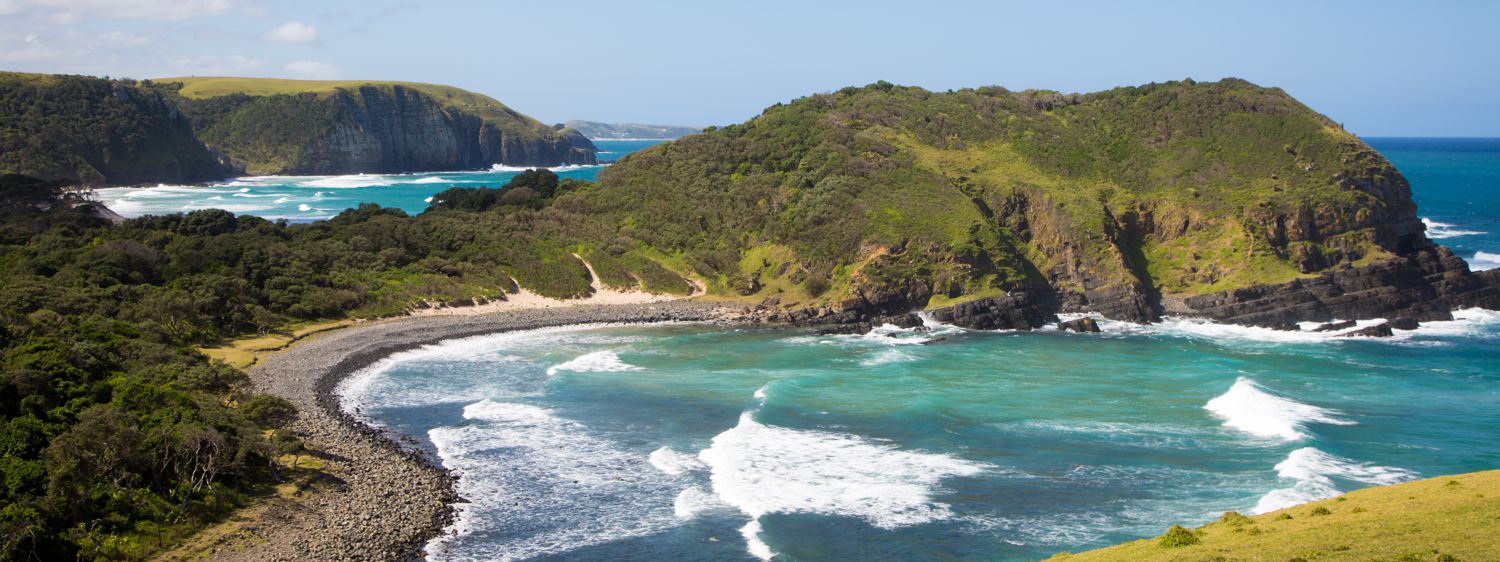Stretching along the Eastern Cape between East London and the KwaZulu-Natal border, the Wild Coast is one of South Africa’s most captivating and unspoiled regions. Known for its dramatic cliffs, secluded beaches, and rolling green hills, this coastline offers a rare blend of raw natural beauty, rich cultural heritage, and ecological diversity.
The Wild Coast owes its name to the powerful Indian Ocean swells that crash against its rugged shores, carving out sea caves, rock pools, and hidden coves. Geologically, the region is a fascinating mosaic of ancient sandstone formations, river gorges, and estuaries that have shaped the landscape over millions of years. Inland, the terrain transitions into undulating grasslands and indigenous forests, home to a wide variety of flora and fauna.
This area is part of the former Transkei homeland, and its cultural roots run deep. The Xhosa people, who have lived here for centuries, maintain a strong connection to their traditions, language, and ancestral lands. Visitors can experience authentic village life, traditional music, and local cuisine, offering a meaningful cultural exchange that goes far beyond the typical tourist experience.
One of the Wild Coast’s most extraordinary natural events is the annual sardine run, often referred to as “The Greatest Shoal on Earth.” Between May and July, billions of sardines migrate northward along the coast, attracting a feeding frenzy of dolphins, sharks, whales, and seabirds. This breathtaking spectacle draws marine enthusiasts and underwater photographers from around the world, offering a once-in-a-lifetime opportunity to witness nature in its most dramatic form.
What makes the Wild Coast truly special is its sense of remoteness and tranquility. Unlike more developed coastal destinations, the Wild Coast remains largely untouched by mass tourism. Charming villages like Coffee Bay, Port St. Johns, and Hole in the Wall offer a laid-back atmosphere, where time seems to slow down and nature takes center stage.
Wildlife enthusiasts will find plenty to marvel at. The region is a haven for birdwatchers, with species such as the Knysna turaco and crowned eagle frequently spotted. Offshore, dolphins and migrating humpback whales can often be seen breaching the waves, especially between June and November.
Whether you're hiking the scenic coastal trails, exploring waterfalls hidden in the forest, or simply soaking in the views from a cliffside lodge, the Wild Coast promises an unforgettable journey into one of South Africa’s last true wildernesses.
At a glance
Why you should visit
Our favourite time to visit
The ideal time to explore the Wild Coast is from late May to July, when mild weather and clear skies coincide with the spectacular annual sardine run—a natural phenomenon where millions of sardines migrate along the coast, attracting dolphins, whales, and seabirds in breathtaking numbers. This period avoids the peak holiday crowds, offering both tranquility and one of nature’s most thrilling marine spectacles.



